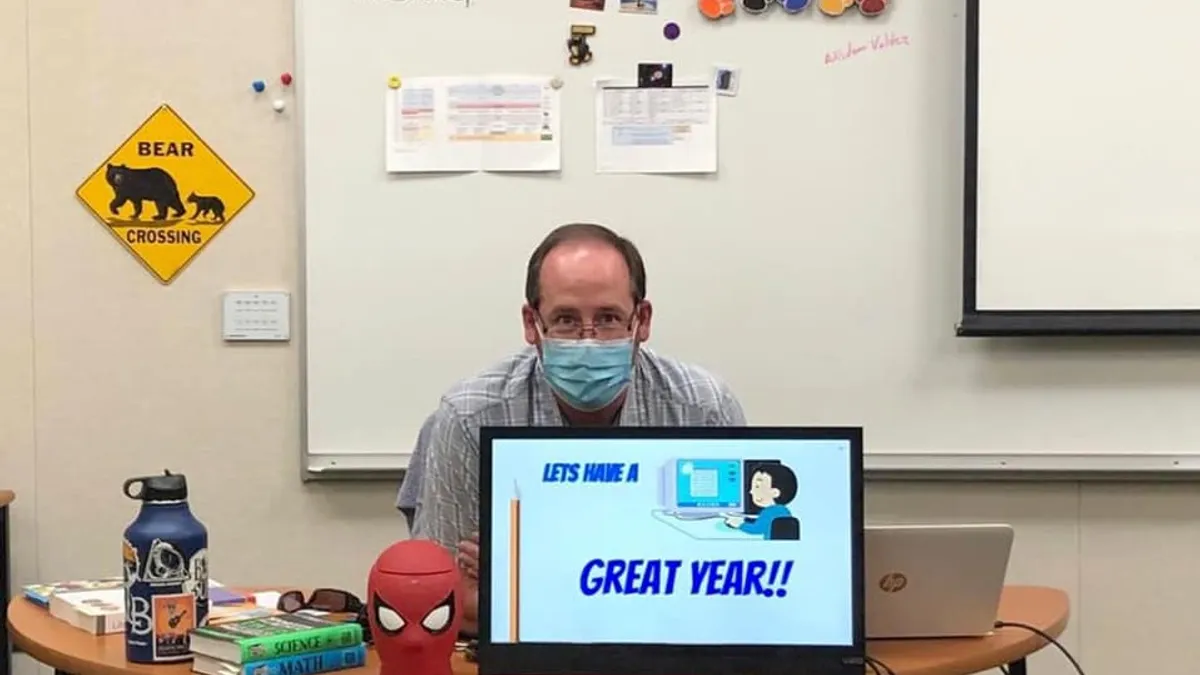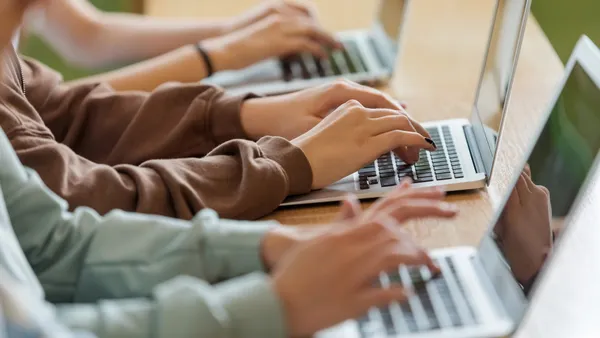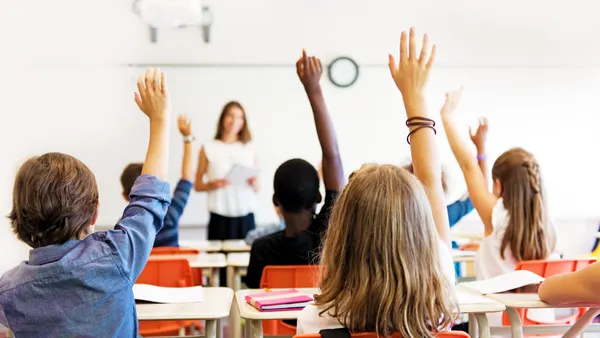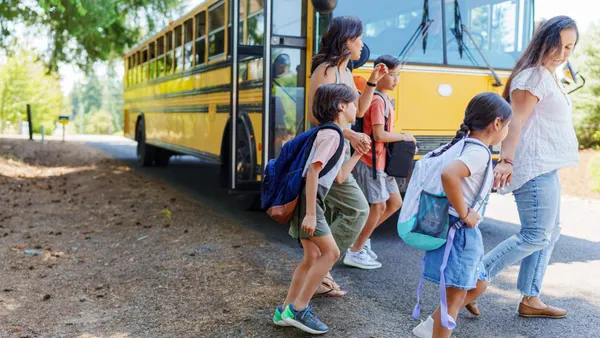Dive Brief:
- Educators need support when navigating the new reality of teaching both virtual and in-person students in hybrid models, Jin-Soo Huh, a partner at The Learning Accelarator, writes in a column for EdSurge.
- To keep students connected, schools should build a strong culture through strategies like morning meetings and closing circles, building in joint fun time that allows for socializing and for in-person students to participate through Zoom so they can be in breakout rooms with any peer.
- To give teachers more time for small group instruction, students must become more independent and accountable. One way to do that is creating class "jobs," where students choose a daily commitment and perform random work checks. It’s also important to keep all classroom information in a common location and clearly communicate what needs to be done each day.
Dive Insight:
Merging two types of teaching into one is a new, challenging skill educators are trying to master. The additional demands also require teachers to work longer hours, leading to more stress and further strains to work-life balance. A Tennessee Education Association survey administered during fall shows 84% of teachers are experiencing a higher workload, saying they worked 13 hours a week more than normal during the first 18 weeks of the school year.
Christine Boatman, a middle school social studies teacher in Oregon, shared hybrid teaching tips in Edutopia after a summer spent trying to balance instruction between in-person and remote learners. She said a large web camera and high-quality microphone allow students at home to hear everything being said and done in the classroom.
In Boatman's district, some remote students were more engaged than those attending in-person. With in-person and remote students learning simultaneously in many hybrid classrooms, educators must also form norms and systems for any student to respond to discussion prompts, and for the whole class to participate in games, activities and team-building exercises while building a sense of community.
Boatman suggested educators consider this a time to take risks, experiment and innovate to find opportunities for student learning.













